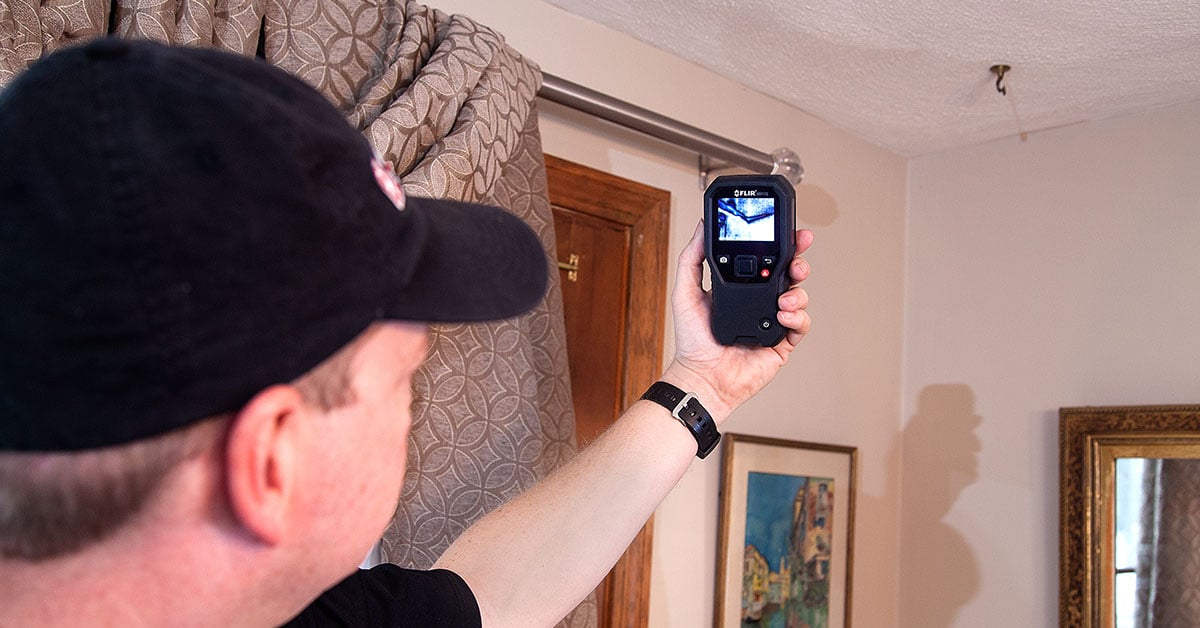Just how to Examine If Your House Has a Concealed Leakage
Just how to Examine If Your House Has a Concealed Leakage
Blog Article
What are your opinions on Leaking water lines?

Early discovery of leaking water lines can alleviate a potential calamity. Some tiny water leakages may not be visible.
1. Examine the Water Meter
Every home has a water meter. Examining it is a surefire manner in which aids you uncover leaks. For starters, turn off all the water sources. Guarantee no person will certainly purge, use the faucet, shower, run the washing maker or dish washer. From there, most likely to the meter and also watch if it will change. Because nobody is using it, there ought to be no motions. If it moves, that indicates a fast-moving leak. Furthermore, if you identify no changes, wait an hour or two as well as examine back once more. This suggests you may have a slow-moving leak that can also be underground.
2. Examine Water Consumption
Analyze your water costs and track your water usage. As the one paying it, you should observe if there are any type of discrepancies. If you detect sudden changes, despite your usage being the same, it implies that you have leakages in your plumbing system. Keep in mind, your water bill must fall under the same range monthly. An abrupt spike in your costs indicates a fast-moving leakage.
Meanwhile, a constant rise each month, even with the very same practices, reveals you have a slow leakage that's additionally slowly intensifying. Call a plumber to completely check your home, especially if you feel a cozy area on your flooring with piping below.
3. Do a Food Coloring Test
When it comes to water usage, 30% originates from toilets. Examination to see if they are running appropriately. Decline flecks of food shade in the storage tank and wait 10 minutes. There's a leak between the tank and bowl if the shade in some way infiltrates your dish throughout that time without flushing.
4. Asses Outside Lines
Do not neglect to inspect your outside water lines as well. Test faucets by attaching a garden tube. Should water permeate out of the link, you have a loosened rubber gasket. Replace this and make sure all connections are tight. It will certainly help get it properly analyzed and kept each year if you've got a sprinkler system. One little leak can throw away lots of water as well as spike your water expense.
5. Assess the situation and also examine
Home owners ought to make it a routine to examine under the sink counters and also also inside cupboards for any type of bad odor or mold and mildew development. These 2 red flags suggest a leak so prompt attention is required. Doing regular inspections, even bi-annually, can save you from a significant issue.
If you know your home is already old, keep a careful eye on your heating units, tubes, pipes etc. Look for stainings and also damaging as most appliances and pipelines have a life expectancy. They will certainly also normally deteriorate as a result of deterioration. Don't wait for it to escalate if you suspect leaking water lines in your plumbing system. Call a specialist plumber immediately so you do not end up with a horrible mess in your home.
Early detection of dripping water lines can alleviate a potential calamity. Some small water leakages may not be visible. Checking it is a guaranteed way that assists you discover leaks. One little leakage can waste heaps of water as well as spike your water expense.
If you believe leaking water lines in your plumbing system, do not wait for it to rise.
WARNING SIGNS OF WATER LEAKAGE BEHIND THE WALL
PERSISTENT MUSTY ODORS
As water slowly drips from a leaky pipe inside the wall, flooring and sheetrock stay damp and develop an odor similar to wet cardboard. It generates a musty smell that can help you find hidden leaks.
MOLD IN UNUSUAL AREAS
Mold usually grows in wet areas like kitchens, baths and laundry rooms. If you spot the stuff on walls or baseboards in other rooms of the house, it’s a good indicator of undetected water leaks.
STAINS THAT GROW
When mold thrives around a leaky pipe, it sometimes takes hold on the inside surface of the affected wall. A growing stain on otherwise clean sheetrock is often your sign of a hidden plumbing problem.
PEELING OR BUBBLING WALLPAPER / PAINT
This clue is easy to miss in rooms that don’t get much use. When you see wallpaper separating along seams or paint bubbling or flaking off the wall, blame sheetrock that stays wet because of an undetected leak.
BUCKLED CEILINGS AND STAINED FLOORS
If ceilings or floors in bathrooms, kitchens or laundry areas develop structural problems, don’t rule out constant damp inside the walls. Wet sheetrock can affect adjacent framing, flooring and ceilings.
https://www.servicemasterbyzaba.com/blog/how-to-detect-water-leakage-in-walls/
.jpg)
I stumbled upon that entry on Leaking water lines while doing a lookup on the search engines. Appreciated our blog? Please share it. Let others find it. Thanks so much for going through it.
Report this page